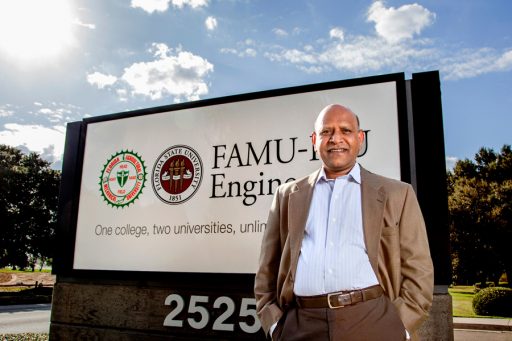
Researchers at Florida State University’s Center for Advanced Power Systems (CAPS), in collaboration with Colorado-based Advanced Conductor Technologies, have demonstrated a new, ready-to-use superconducting cable system — an improvement to superconductor technology that drives the development of technologies such as all-electric ships or airplanes.
In a paper published in Superconductor Science and Technology, the researchers demonstrated a system that uses helium gas for crucial cooling. Superconducting cables can move electrical current with no resistance, but they need very cold temperatures to function.

“We want to make these cables smaller, with lower weight and lower volume,” said paper co-author Sastry Pamidi, a FAMU-FSU College of Engineering professor and CAPS associate director. “These are very efficient power cables, and this research is focused on improving efficiency and practicality needed to achieve the promise of next-generation superconductor technology.”
Previous work showed that the body of superconducting cables could be cooled with helium gas, but the cable ends needed another medium for cooling, such as liquid nitrogen. In this paper, researchers overcame that obstacle and were able to cool an entire cable system with helium gas.
The work gives engineers more design flexibility because helium remains a gas in a wider range of temperatures than other mediums. Liquid nitrogen, for example, isn’t a suitable cooling medium for some applications, and this research moves superconducting technology closer to practical solutions for those scenarios.
The paper is the latest outcome of the partnership between researchers at CAPS and Advanced Conductor Technologies (ACT). Previous teamwork has led to other publications and to the development of Conductor on Round Core (CORC®) cables that were the subject of this research.
“Removing the need for liquid nitrogen to pre-cool the current leads of the superconducting cable and instead using the same helium gas that cools the cable allowed us to make a highly compact superconducting power cable that can be operated in a continuous mode,” said Danko van der Laan, ACT’s founder. “It therefore has become an elegant system that’s small and lightweight and it allows much easier integration into electric ships and aircraft.”
The ongoing collaboration has been funded by Small Business Innovation Research (SBIR) grants from the U.S. Navy. The grants encourage businesses to partner with universities to conduct high-level research.
The collaboration provides benefits for all involved. Companies receive help creating new products. Students see how their classwork applies to real-life engineering problems. Taxpayers get the technical and economic benefits that come from the innovations. And faculty members receive a share of a company’s research funding and the opportunity to tackle exciting work.
“We like challenges,” Pamidi said. “These grants come with challenges that have a clear target. The company says ‘This is what we want to develop. Can you help us with this?’ It is motivating, and it also provides students with connections. The small businesses we work with not only provide money, but they also see the skills our students are gaining.”
CAPS researcher Chul Kim and ACT researcher Jeremy Weiss were co-authors on this work. Along with the U.S. Navy grant, this research was supported by the U.S. Department of Energy.
CAPS is a multidisciplinary research facility affiliated with the FAMU-FSU College of Engineering organized to advance the field of power systems technology. Researchers focus on electric power systems modeling and simulation, power electronics and machines, control systems, thermal management, cyber-security for power systems, high-temperature superconductor characterization and electrical insulation research.
Visit the Office of Research Development’s SBIR website for more information on FSU researchers’ work with this federal program.




